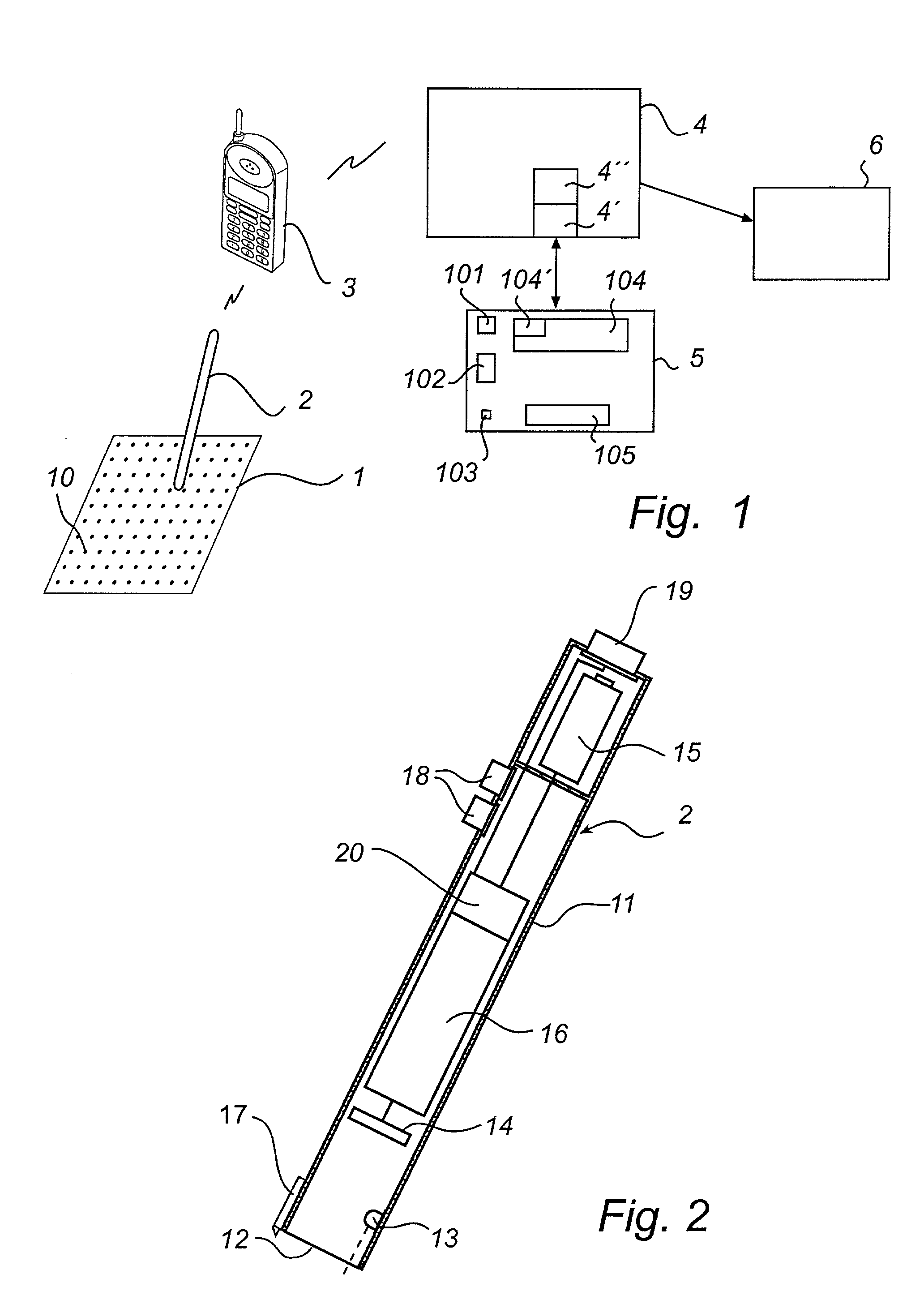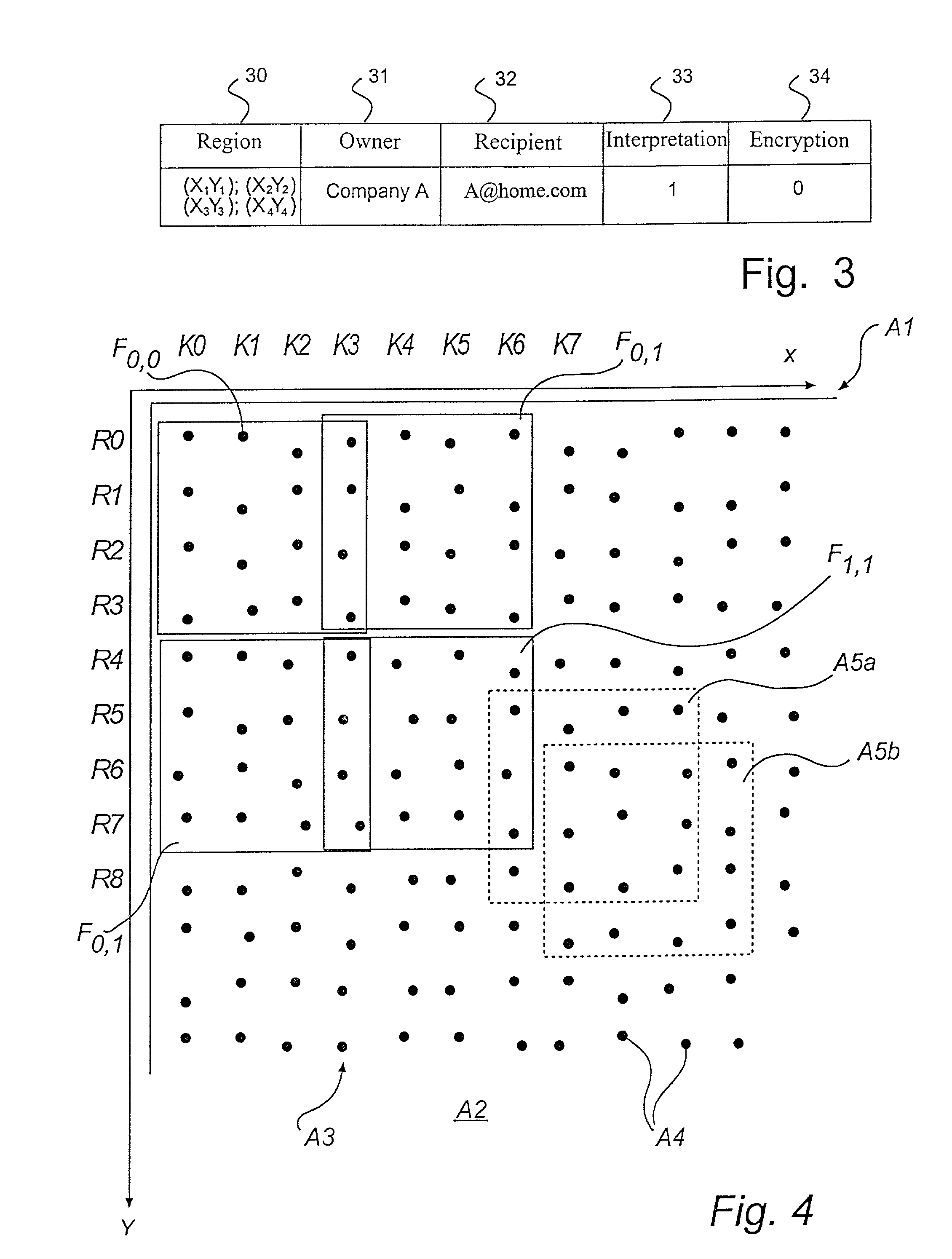Centralized information management based upon position information
a position information and information management technology, applied in the field of information management and communication, can solve the problems of slow information entry through the keyboard, difficult management and communication efficiency, and difficult management of paper-based information, and achieve the effect of improving information management and increasing the possibility of managing digitally-recorded information
- Summary
- Abstract
- Description
- Claims
- Application Information
AI Technical Summary
Benefits of technology
Problems solved by technology
Method used
Image
Examples
example 1
[0110]A transport company uses the system to collect information associated with deliveries. The transport company therefore owns a main region 101 on the imaginary surface 5. In the central unit's 4 memory 4′, the transport company is stored as the owner of the main region 101. The transport company additionally defines rules for how the information which is identified as belonging to the main region 101 is to be managed.
[0111]In this example, the transport company wants the central unit 4 to interpret the information which it receives and forward it in character-coded format to the transport company's server unit 6 together with the user identities of the user units 2. The transport company provides its drivers with user units 2 and with forms 1 which are provided with position-coding patterns. When a driver delivers a package he fills in a form 1 using the pen point of the user unit 2, which continually records the position-coding pattern on the form 1 while the user writes text ...
example 2
[0112]A company which sells picture postcards has access to a region 102 on the imaginary surface 5. The company sells picture postcards which look like a normal picture postcard with a picture on the front and an address and writing area on the back. The picture postcard 1 can be used as a normal picture postcard, but it is also provided with a position-coding pattern across the whole of the back. A user can then, by means of a user unit 2, write a message in the writing area and an e-mail address or the like in the address area on the back of the picture postcard. The user unit 2 records the position-coding pattern as it moves across the back of the picture postcard 1 and generates a sequence of pairs of coordinates which represents the written text. The sequence of pairs of coordinates is sent to the central unit 4 which determines the region affiliation. In this case the rules for the main region 102 indicate that the information is to be character-coded and sent to the postcard...
example 3
[0113]A company which sells a product A uses the information system to distribute information to interested buyers of the product A. The company has the exclusive right to a main region 103 which can be fairly small, in the extreme case corresponding to only one position on the imaginary surface 5. The company marks its products with the position-coding pattern which codes the main region 103. A user who is interested in obtaining more information about the product records all or part of the position-coding pattern (in the case this represents several positions) using a user unit 2 which sends the corresponding position or positions to the central unit 4 together with the user identity of the user unit 2. In this case a rule can be associated with the main region 103 indicating that information which is recorded within the main region is simply to be forwarded to a computer 6 belonging to the owner of the region 103. In response to the receipt of the information, the owner's compute...
PUM
 Login to View More
Login to View More Abstract
Description
Claims
Application Information
 Login to View More
Login to View More - Generate Ideas
- Intellectual Property
- Life Sciences
- Materials
- Tech Scout
- Unparalleled Data Quality
- Higher Quality Content
- 60% Fewer Hallucinations
Browse by: Latest US Patents, China's latest patents, Technical Efficacy Thesaurus, Application Domain, Technology Topic, Popular Technical Reports.
© 2025 PatSnap. All rights reserved.Legal|Privacy policy|Modern Slavery Act Transparency Statement|Sitemap|About US| Contact US: help@patsnap.com



